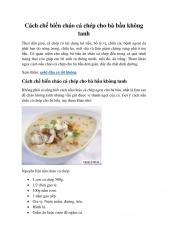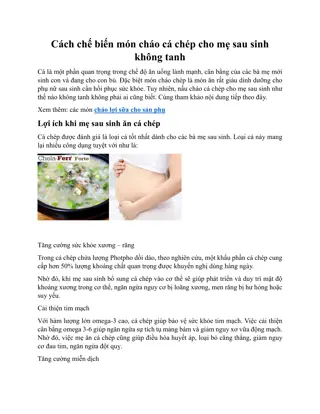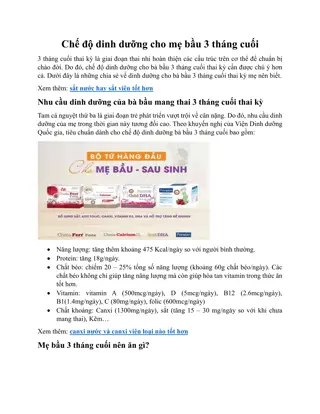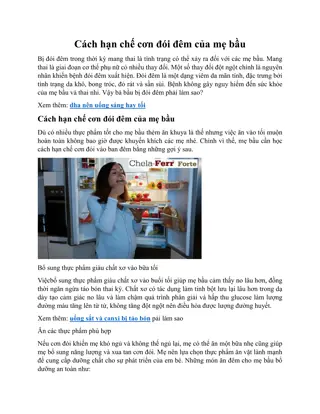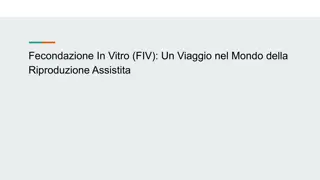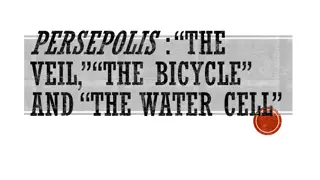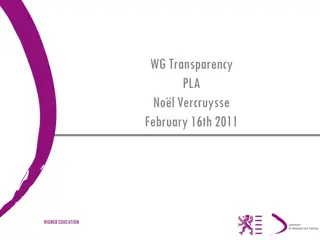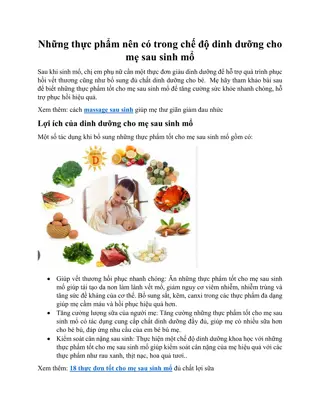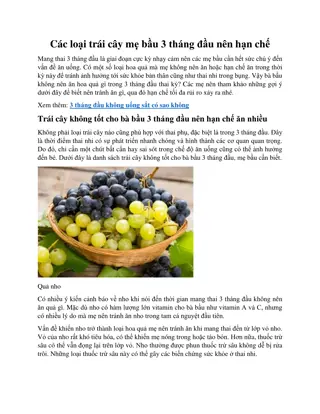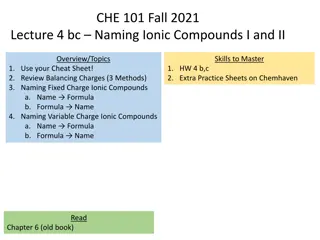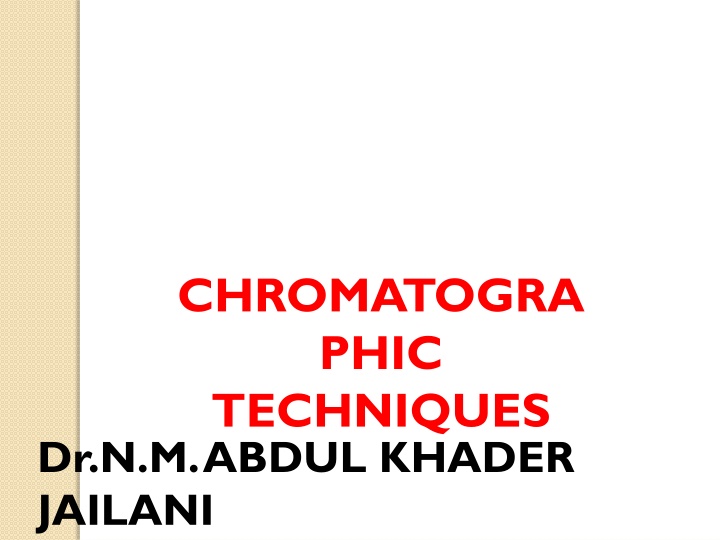
Chromatographic Techniques: Separation Methods and Applications
"Explore the fundamentals of chromatography, from its historical origins to modern applications in analyzing complex mixtures. Learn about the principles, various techniques, and importance of chromatography in separating compounds effectively. Discover how this method is utilized in separating amino acids, proteins, and carbohydrates, as well as for drug and hormone analysis. Dive into the world of chromatographic science with this comprehensive guide."
Download Presentation

Please find below an Image/Link to download the presentation.
The content on the website is provided AS IS for your information and personal use only. It may not be sold, licensed, or shared on other websites without obtaining consent from the author. If you encounter any issues during the download, it is possible that the publisher has removed the file from their server.
You are allowed to download the files provided on this website for personal or commercial use, subject to the condition that they are used lawfully. All files are the property of their respective owners.
The content on the website is provided AS IS for your information and personal use only. It may not be sold, licensed, or shared on other websites without obtaining consent from the author.
E N D
Presentation Transcript
CHROMATOGRA PHIC TECHNIQUES Dr.N.M. ABDUL KHADER JAILANI
CONTENTS Introduction to chromatography History Principles Importance Chromatographic terms Classification of chromatography Adsorption chromatography Partition chromatography Gas-liquid phase chromatrography Solid-liquid phase chromatrography Liquid-gas phase chromatrography Liquid-liquid phase chromatrography Important properties of liquid phase Conclusion 2
Chromatography Chromatography (from Greek chroma "color and graphein "to write") is the collective term for a set of laboratory techniques for the separation of mixtures. The mixture is dissolved in a fluid called the mobile phase, which carries it through a structure holding another material called the stationary phase. The various constituents of the mixture travel at different speeds, causing them to separate. The separation is based on 3
History Chromatography, literally "color writing", was first employed by Russian scientist Mikhail Tsvet in 1900. He continued to work with chromatography in the first decade of the 20th century, primarily for the separation of plant pigments such as chlorophyll, carotenes, and xanthophylls. Since these components have different colors (green, orange, and yellow,respectively) they gave the technique 4
Principles Chromatography usually consists of mobile phase and stationary phase. The mobile phase refers to the mixture of substances to be separated dissolved in a liquid or a gas. The stationary phase is a porous solid matrix through which the sample contained in the mobile phase percolates. The interaction between the mobile phase and the stationary phase results in the separation of the compound from the 5
Applications of chromatography The chromatographic technique is used for the separation of amino acids,proteins & carbohydrates. It is also used for the analysis of drugs,hormones,vitamins. Helpful for the qualitative & quantitative analysis of complex mixtures. The technique is also useful for the determination of molecular weight of proteins. 6
The chromatographic method of separation, in general, involves following steps Adsorption or retention of substances on the stationary phase Separation of the adsorption of substances by the mobile phase Recovery of the separated substances by a continuous flow of the mobile phase; the method being called elution Qualitative and Qantitative analysis of the eluted substances 7
Chromatographic terms The analyte is the substance to be separated during chromatography. A chromatogram is the visual output of the chromatograph. The eluate is the mobile phase leaving the column. The eluent is the solvent that carries the analyte The detector refers to the instrument used for qualitative and quantitative detection of analytes after separation. 8
Classification of chromatography 1. Based on mechanism of separation I. adsorption chromatography II. Partition chromatography 2. Based on phases I. Solid phase chromatography i. Solid-liquid chromatography ii. Solid-gas chromatography II. Liquid phase chromatography i. Liquid-liquid chromatography ii. Liquid gas chromatography 3. Based on shape of chromatographic bed I. Planner chromatography i. Paper chromatography ii. Thin layer chromatography II. Column chromatography i. Packed column chromatography ii. Open tubular column chromatography 9
Flow chart diagram of chromatography chromatography adsorption partition Competition between Solid and Competition between Liquid and Gas Gas G.L.C. Liquid H.P.L.C. Liquid (G.S.C.) Column chromatography Column chromatography Thin layer chromatography Paper chromatography TLC 10
Adsorption chromatograohy Adsorption chromatography is process of separation of components in a mixture introduced into chromatography system based on the relative difference in adsorption of components to stationary phase present in chromatography column Adsorption chromatography is one of the oldest types of chromatography. The equilibriation between the mobile and stationary phase accounts for the separation of different solutes. It utilizes a mobile liquid or gaseous phase that is adsorbed onto the surface of a stationary solid phase sumit prajapati 11
Partition chromatography Chromatography in which separation is based mainly on differences between the solubility of the sample components in the stationary phase or on differences between the solubility of the components in the mobile and stationary phases This form of chromatography is based on a thin film formed on the surface of a solid support by a liquid stationary phase Solute equilibrates between the mobile phase and the stationary liquid. sumit prajapati 12
Gas-Solid chromatography(G.S.C.) Gas chromatography employs an inert gas as the mobile phase The mobile phase is a gas, often nitrogen, but sometimes helium, hydrogen or occasionally another gas. It is called the "carrier gas". Common solids are charcoal, a synthetic zeolite called "molecular sieve", or a combination of the two. Separation depends on the relative partial pressures of the sample components above the stationary phase. Gas-solid chromatography is relatively rare, but it is used to separate atmospheric gases 13
Solid-Liquid chromatography Liquid chromatography (LC) is a separation technique in which the mobile phase is a liquid. The preferred mobile phase is a nonpolar or slightly polar... Liquid chromatography can be carried out either in a column or a plane In liquid-solid chromatography the porous adsorbent is polar and separation is based on the properties of classes of compounds e.g., amines (alkaline) from alcohols (neutral) and esters (neutral) from acids Popular adsorbents are Silica and Alumina. 14
Liquid-Gas Chromatography The mobile phase is an unreactive gas, such as nitrogen (the carrier gas) The stationary phase comprises of a small amount of liquid held on a finely-divided inert solid support. Gas-liquid chromatography is very sensitive and can be used to detect small quantities of substances it is often used in forensic tests Stationary phase used in (LGC) Dimethyl Polysiloxane (350oC) Hydrocarbons, Polynuclear aromatics Poly(phenyl methyl) siloxane (250oC) Steroids, Pesticides, Glycols 15
Liquid-Liquid Chromatography The first liquid-liquid system was reported by A. J. P. Martin who used water supported on silica gel as the stationary phase and n-heptane as the mobile phase Liquid-liquid chromatography is a chromatography separation technique in which the mobile phase is a liquid (usually a solvent or a simple binary solvent mixture) and the stationary phase is also a liquid (which must be immiscible and insoluble in the liquid mobile phase). The system is inherently unstable, as the stationary phase will always have some solubility in mobile phase 16
Planner chromatography Planar chromatography is a separation technique in which the stationary phase is present on a plane. The plane can be a paper, serving as such or impregnated by a substance as the stationary bed (paper chromatography) or a layer of solid particles spread on a support such as a glass plate (Thin layer chromatography). Different compounds in the sample mixture travel different distances according to how strongly they interact with the stationary phase as compared to the mobile phase. The specific Retention factor (Rf) of each chemical can be used to aid in the identification of an unknown substance. 17
Column Chromatography Column chromatography is a separation technique in which the stationary bed is within a tube. The particles of the solid stationary phase or the support coated with a liquid stationary phase may fill the whole inside volume of the tube (packed column) or be concentrated on or along the inside tube wall leaving an open, unrestricted path for the mobile phase in the middle part of the tube (open tubular column). Differences in rates of movement through the medium are calculated to different retention times of the sample 18
Important properties of liquid stationary phase Liquid phase should have low volatility and high stability at elevated temperatures Liquid phase should not permeate too deeply into the fine pores of the support structure as slow diffusion in and out of pores affects column efficiency Support should be deactivated before use as undesirable surface impurities can cause decomposition of the sample or stationary liquid Small particles of support give higher efficiency as HETP is proportional to particle diameter but particle size reduction increases back pressure 19
Conclusion In overall ranking Chromatography techniques , it can be judge SFC falls somewhere between HPLC or GC. In field of pharmaceutical chemistry and bioanalytical application gained its applications 20
References www.google.com www.wikipedia.com www.studymafia.org www.pptplanet.com
3/21/2025 sumit prajapati 22

